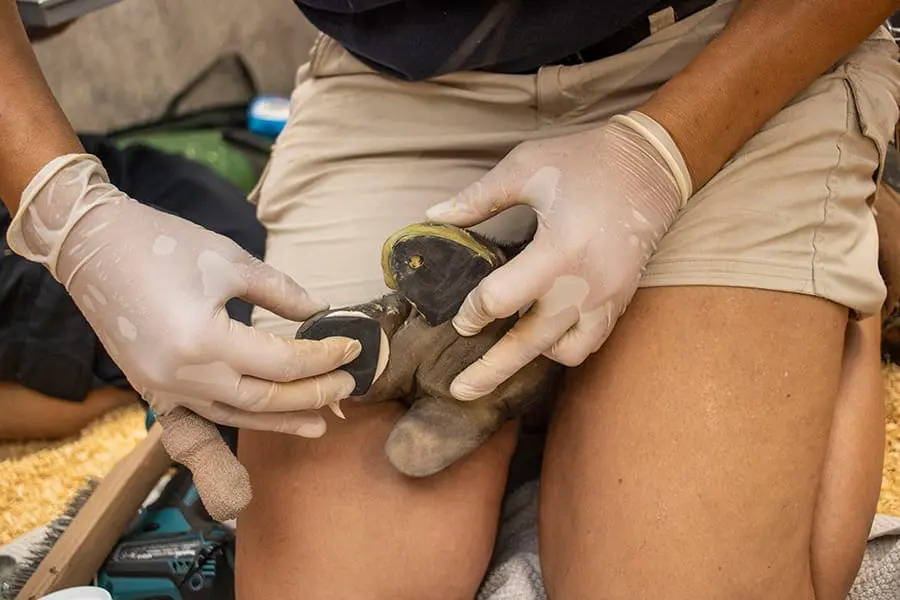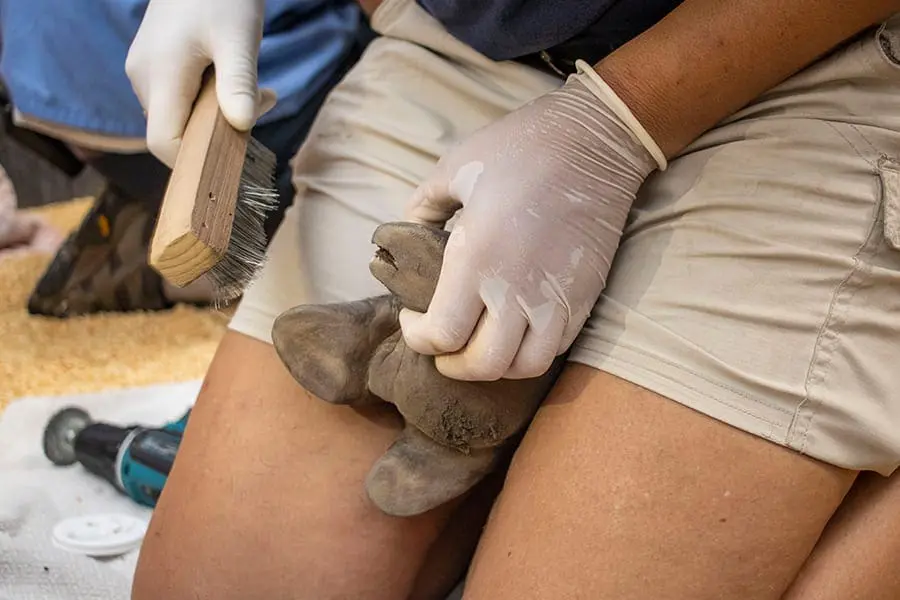

These custom-made “shoes” were made for walkin’.
Four-year-old Baird’s tapir Antonio is on the mend thanks to the hard work and watchful eye of our animal care staff.
A few weeks ago, Rainforest Revealed keepers noticed a small crack on one of the hooves on Antonio’s front left foot. They immediately notified our veterinary team, who ordered custom-made polyurethane “shoes” just like the ones designed for zebra Iggy last year. While Antonio did not appear to be in any physical pain, infection was a possibility, so keepers applied a topical medication to Antonio’s hoof while we waited for the shoes—which will prevent the crack from growing while it heals—to arrive from Colorado.

The hoof is cleaned before “shoes” are applied.
Once Antonio was anesthetized, radiographs were taken to confirm the crack was not affecting bone, and general curator Lauren Hinson began the shoeing process.
She first cleaned and filed down the hooves to provide a smooth, flat surface for shoe placement. Hinson then coated the affected area with a specialized putty and got to work on attaching three shoes (Baird’s tapirs have four hooves on each front foot, three of which are weight-bearing) with an animal-safe adhesive. While under anesthesia, our veterinary team also performed a physical exam and a blood draw on Antonio, who recovered without issue in a behind-the-scenes area shortly after the procedure concluded.
This big guy will sport his shoes for up to eight weeks, at which time we will check to see if the shoes fell off on their own or need to be removed as they will hopefully no longer be needed. The crack will be checked at this time to see if it healed properly.
Between materials and labor, hoof care procedures like Antonio’s use a lot of our resources. If you’d like to help cover these expenses, click here to learn how you can support the Zoo.
Baird’s tapirs are considered endangered and all tapir species are threatened due to hunting pressure and habitat loss. Since 2002, we’ve supported tapir conservation by helping organizations like Lowland Tapir Conservation Initiative research these incredible animals.
